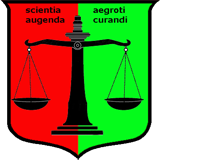Professor Dr. med. Christian ScharfetterDept. of Psychiatry, Psychotherapy & PsychosomaticsPsychiatric Hospital, University of Zurich |

|


|
Ethnicity-Independent Susceptibility to Major Psychiatric DisordersThe functional psychoses "schizophrenia", "schizoaffective disorder", and "bipolar illness" represent complex clinical syndromes that are characterized by phenotypic heterogeneity. Yet evidence from numerous studies suggests that (1) the prevalence of schizophrenia and bipolar illness is with 1% very similar across ethnicities, and (2) a strong genetic component is involved in the disorders’ pathogenesis. Using data from different US-American ethnicities (77 families with a total of 17 unaffected and 170 affected sib pairs; 276 marker loci) we searched for ethnicity-independent oligogenic susceptibility loci for which the between-sib genetic similarity in affected sib pairs deviated from the expected values. Specifically, we addressed the question of the extent to which genetic risk factors and their interactions constitute multigenic inheritance of functional psychoses across populations and might constitute universal targets for treatment. Quantifying Genetic SimilarityOur genotype-to-phenotype search strategy was based on a genetic similarity function that allowed us to quantify the inter-individual genetic distances d(Xi,Xj) between the allelic genotype patterns Xi, Xj of any two subjects i, j with respect to n loci L1, L2, .. Ln. Thus, we were able to assess the between-ethnicity, the within-ethnicity, and the within-family genetic similarities. The problem of ethnicity-independent vulnerability was addressed by treating the Afro-American families as "training" samples, while the NonAfro-American families served as independent "test" samples. We evaluated the between-sib similarities which were expected to deviate from "0.5" in affected sib pairs if the region of interest contained markers close to vulnerability genes. The reference value "0.5" was derived from the parent-offspring similarities that are always "0.5", irrespective of the affection status of parents and offspring. Configuration of Vulnerability LociWe found 12 vulnerability loci on chromosomes 1, 4, 5, 6, 13, 14, 18 and 20, which were reproducible across the two samples under comparison and may constitute an ethnicity-independent oligogenic model of vulnerability to functional psychoses. Families of all index-case related diagnostic categories contributed to these signals. The elevated vulnerability appeared to be unspecific and to act in such a way that exogenous factors become more likely to trigger the onset of psychiatric illnesses. This view was further supported by the fact that some of the genomic regions identified through this study also showed up with other psychiatric and somatic conditions, such as alcohol dependence and psoriasis. Derived through a method of approach different from standard linkage analyses, our results displayed some remarkable overlap with previous findings in the literature, in particular, for the D13S779 locus along with the well-known candidate region at D6S1009. Compared to the results of previous linkage analyses of the NIMH data our analysis yielded the same signals at the D6S462 and D13S797 loci, while the α-7 nicotinic receptor CNRNA7 on chromosome 15 did not show up among the NonAfro-Americans, suggesting that ethnical differences might influence, to some extent, susceptibility to "schizophrenia", "schizoaffective disorder", and "bipolar illness". References
Stassen HH, Begleiter H, Porjesz B, Rice J, Scharfetter C, Reich T: Structural decomposition of
genetic diversity in families with alcohol dependence. Genetic Analysis Workshop 11: Analysis
of genetic and environmental factors in common diseases. Genetic Epidemiology 1999; 17:
325-330
Stassen HH and Scharfetter C: Integration of genetic maps by polynomial transformations.
Am J Med Genetics B 2000; 96: 108-113
Stassen HH, Bridler R, Hägele S, Hergersberg M, Mehmann B, Schinzel A, Weisbrod M, Scharfetter C:
Schizophrenia and smoking: evidence for a common neurobiological basis?
Am J Med Genetics B 2000; 96: 173-177
Hoffmann K, Stassen HH, Reis A: Genkartierung in Isolatpopulationen. Medizinische Genetik 2000;
12,4: 428-437
Stassen HH, Scharfetter C: Oligogenic approaches to the predisposition of asthma in ethnically
diverse populations. Genetic Analysis Workshop 12: Analysis of genetic and environmental factors
in common diseases. Genetic Epidemiology 2001; 21(1): 284-289
Stassen HH, Hoffmann K, Scharfetter C: Similarity by state/descent and genetic vector spaces:
Analysis of a longitudinal family study. Genetic Analysis Workshop 13: Analysis of longitudinal
family data for complex diseases and related risk factors. BMC Genet 2003; 4, S59: 1-6
Stassen HH, Bridler R, Hell D, Weisbrod M, Scharfetter C: Ethnicity-independent genetic basis
of functional psychoses. A Genotype-to-phenotype approach. Am J Med Genetics B 2004; 124:
101-112
Berger M, Stassen HH, Köhler K, Krane V, Mönks D, Wanner C, Hoffmann K, Hoffmann MM, Zimmer M,
Bickeböller H, Lindner TH: Hidden population substructures in an apparently homogeneous
population bias association studies. Eur J Hum Genetics 2006; 14: 236-244
Stassen HH, Szegedi A, Scharfetter C: Modeling Activation of Inflammatory Response System.
A Molecular-Genetic Neural Network Analysis. BMC Proceedings 2007, 1 (Suppl 1): S61, 1-6
Stassen HH, Hoffmann K, Scharfetter C: The Difficulties of Reproducing Conventionally Derived
Results through 500k-Chip Technology. BMC Genet Proc. 2009; 3 Suppl 7: S66
|
|

Vulnerability-related (negative signs) and protective loci (positive signs) on chromosome 6 as derived from the Afro-American training samples (Figure a) and the NonAfro-American test samples (Figure b) through a multivariate sib-pair method. The contribution of marker loci to the oligogenic model is plotted along the y-axis.
Please note: important here is not the absolute size of the locus contributions
when comparing Afro- and NonAfro-populations, but the fact that the signals are showing up
at the same genomic locations (green marks).
|
|
| [ Mail to Webmaster ] k454910@ifrg.ch |